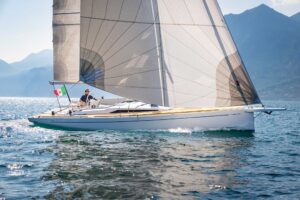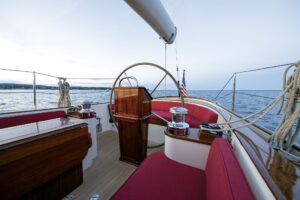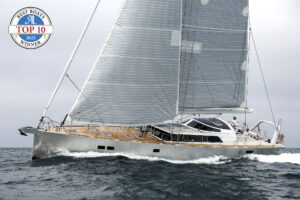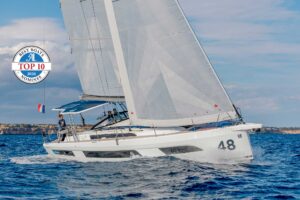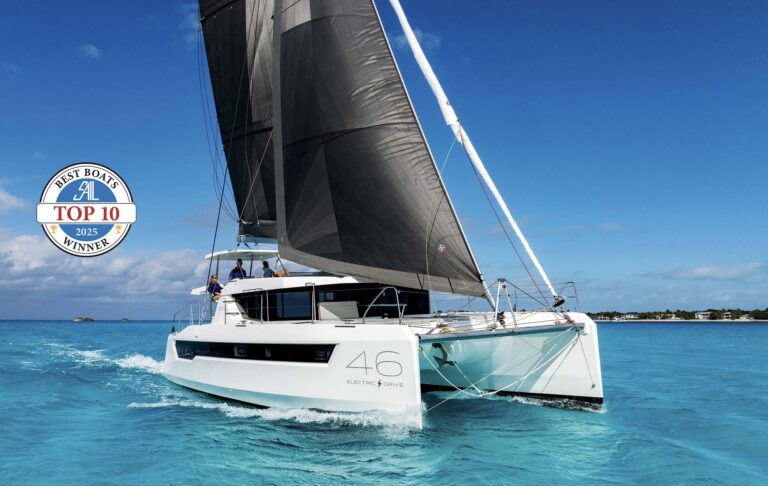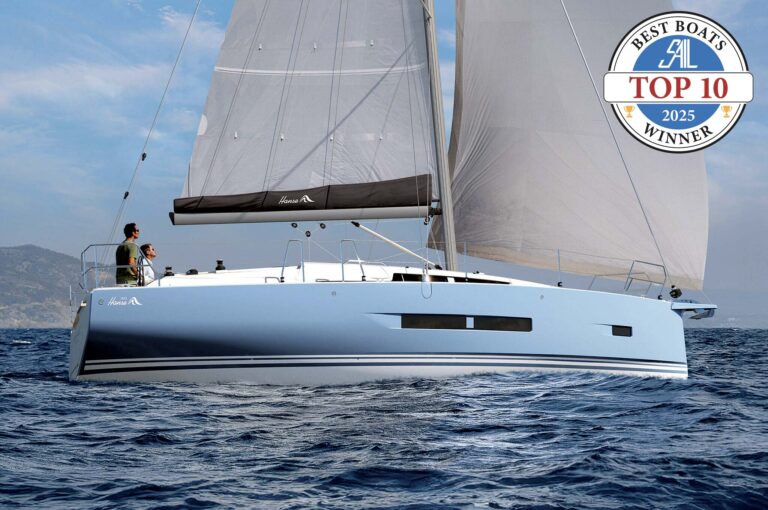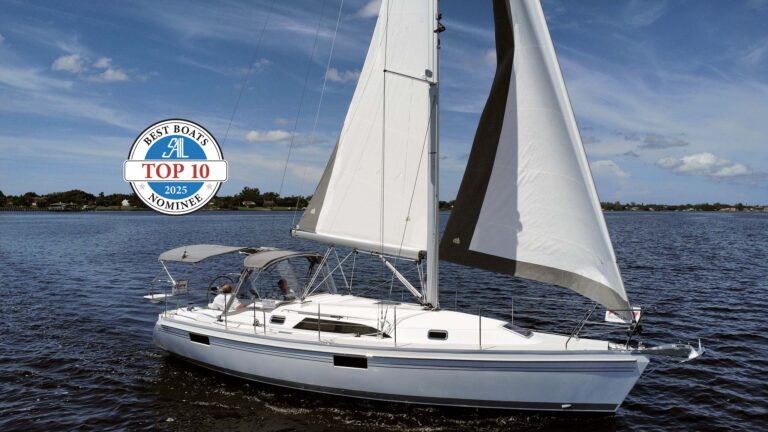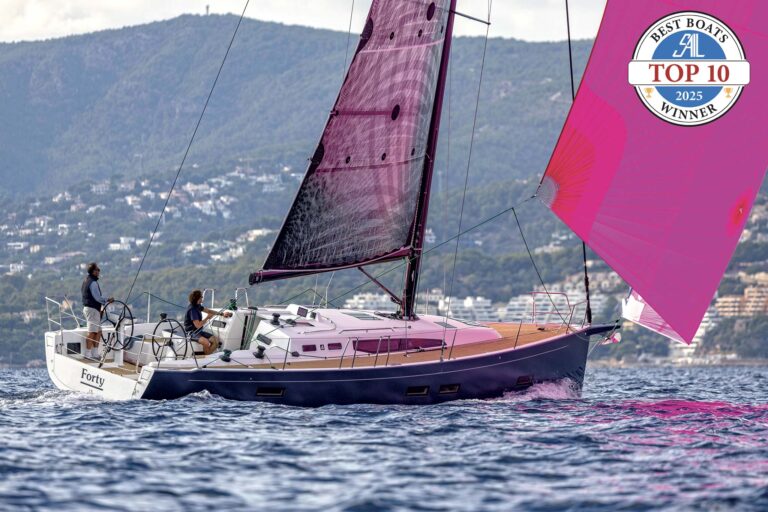The forward cabin is convertible in that its exceptionally wide berth can be divided amidships with a plywood partition. When the partition is in place, extra cushions will fit on drop-leaf shelves to create two double berths measuring 6 feet, 9 inches by 4 feet, 9 inches.
Dividing the bed also splits the entire stateroom. Since each half of the total space has its own head and shower and its own passageway to the raised saloon, you can have either two normal-size cabins or one immense one. That said, the plywood partition is relatively thin, so the couples in these adjoining cabins would be able to hear everything that’s going on next door. The thicker bulkhead that is part of the four-cabin charter version provides more privacy, but it doesn’t have the flexibility that comes with this approach.
Jeanneau builds all its auxiliary systems very carefully. All the plumbing is of high quality, well-secured and double-clamped even where construction codes do not require it. The holding tanks are above the waterline and located where they can drain naturally when sailing offshore. That feature simplifies the plumbing a lot even as it increases reliability. Gravity never clogs.
The engine installation is typical for a modern production yacht of this size. The companionway steps lift up to expose the front of the engine, and access panels on the front and sides of the compartment make it easy to change filters or fiddle with the fuel lines. All that has to be done to expose the drive shaft and stern gland is to lift a floor in the aft cabin. The standard prop is a fixed three-blader, and that’s certainly a good choice for charter service. Many private owners, however, would prefer the better sailing efficiency that comes with a feathering or folding prop.
The main electrical panel looks very simple for a system this size, but a closer look reveals that each button will bring up a selection of choices. Now that we’ve become accustomed to mobile phones and iPods, a button is a familiar way to help simplify a display but not lose any of the numerous functions.
Menu-driven panels are likely to become more commonplace as builders begin to move toward linear wiring plans with microprocessor-equipped smart nodes attached to a central electrical bus that runs the length of the vessel. The auto industry has been wiring cars this way for several years because it reduces building costs and simplifies both troubleshooting and adding accessories later.
Converting to full-time cruising and voyaging on this yacht will require only the usual upgrades to any high-quality cruiser of this size. Among the needed items are lee cloths, cabin-sole latches, a watermaker, a life raft, jacklines, a ditch bag, and the usual personal safety gear. On this yacht the stowage area for the life raft allows the raft to be launched through the transom. While Jeanneau has earned a reputation for the integrity of its rigs and hulls over many ocean miles, it’s always better to be prepared.
While my test sail was in flat water and light air, I’d expect this big Jeanneau to behave much like its smaller siblings do when the wind and seas build. The hull form is driven easily, and it is fast; an initial tenderness tends to become stiffer when the yacht heels a bit. The fine entry and long waterline slices easily through wakes, and that’s a good sign that the bow sections should also handle the natural waves of choppy bays and sounds and produce a smooth ride.
There’s one more thing, and that is the price. The owners told me that they hadn’t originally planned to buy a bigger yacht so soon, but when the low cost and charter-leaseback arrangement was put on the table, they concluded the deal was too good to pass up.
Designers:
Philippe Briand and Vittorio Garonni
28 Rue Saint Saveur
1700 La Rochelle, France
Tel. 011-335-46-50-57-44:
briand-yacht-design.com
Builder:
Chantiers Jeanneau SA
BP 529 85505 Les Herbiers
Cedex, France
Tel. 011-332-51-64-20-20
jeanneau.com
Jeanneau America
105 Eastern Avenue,
Suite 202
Annapolis, Maryland 21403
Tel. 410-280-9400
jeanneauamerica.com
Tom Dove has been sailing for more than half a century and writing about it for over 20 years. When he’s not exploring new technology or testing boats, he sails his Ranger 33, Crescendo, on Chesapeake Bay and beyond.

